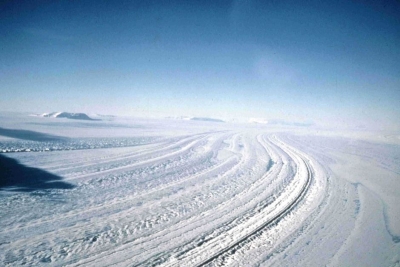
The world’s largest glacier is the Lambert glacier in Antarctica , according to the United States Geological Survey. The glacier is more than 60 miles (96 km) wide at its widest point, about 270 miles (435) long, and has been measured to be 8,200 feet (2,500 meters) deep at its center.
Glaciers form when the annual snowfall in a region exceeds the rate at which the snow melts, allowing enormous amounts of snow to accumulate over time. The fallen snow compresses into solid ice under its own weight, forming solid sheets of ice.
And these sheets are in motion. Glaciers flow like very slow-moving rivers, and can stretch over hundreds of miles. The Lambert glacier flows at a rate of about 1,300 to 2,600 feet (400 to 800 meters) each year.
The glacier is important in the study of climate change because very small changes in the climate can have significant consequences for the flow of ice down the glacier. Most studies of the Lambert Glacier are done with remote sensing due to the harsh conditions in the area.
Credit : Live Science
Picture Credit : Google




